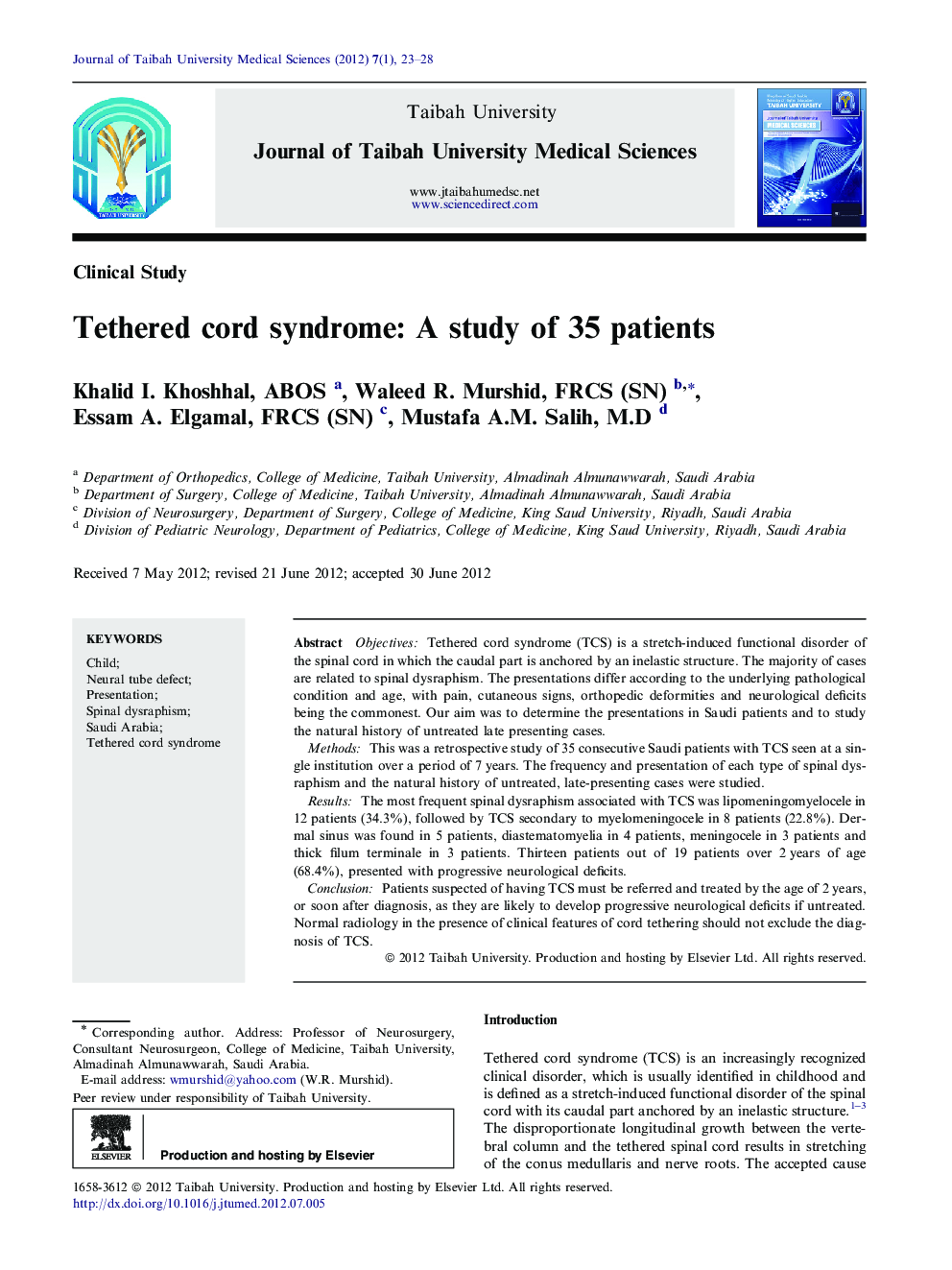| Article ID | Journal | Published Year | Pages | File Type |
|---|---|---|---|---|
| 3484499 | Journal of Taibah University Medical Sciences | 2012 | 6 Pages |
ObjectivesTethered cord syndrome (TCS) is a stretch-induced functional disorder of the spinal cord in which the caudal part is anchored by an inelastic structure. The majority of cases are related to spinal dysraphism. The presentations differ according to the underlying pathological condition and age, with pain, cutaneous signs, orthopedic deformities and neurological deficits being the commonest. Our aim was to determine the presentations in Saudi patients and to study the natural history of untreated late presenting cases.MethodsThis was a retrospective study of 35 consecutive Saudi patients with TCS seen at a single institution over a period of 7 years. The frequency and presentation of each type of spinal dysraphism and the natural history of untreated, late-presenting cases were studied.ResultsThe most frequent spinal dysraphism associated with TCS was lipomeningomyelocele in 12 patients (34.3%), followed by TCS secondary to myelomeningocele in 8 patients (22.8%). Dermal sinus was found in 5 patients, diastematomyelia in 4 patients, meningocele in 3 patients and thick filum terminale in 3 patients. Thirteen patients out of 19 patients over 2 years of age (68.4%), presented with progressive neurological deficits.ConclusionPatients suspected of having TCS must be referred and treated by the age of 2 years, or soon after diagnosis, as they are likely to develop progressive neurological deficits if untreated. Normal radiology in the presence of clinical features of cord tethering should not exclude the diagnosis of TCS.
